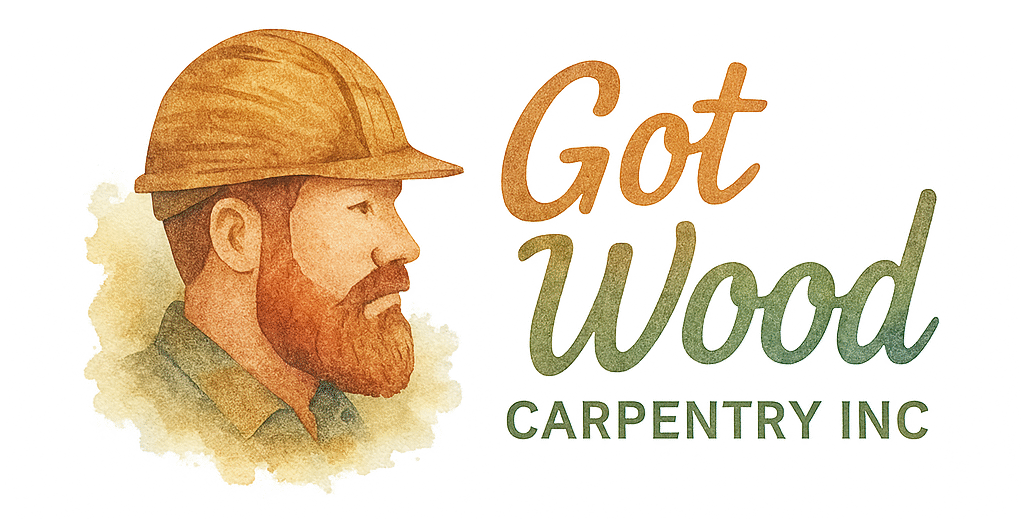Carpentry is a craft that requires precision, skill, and, most importantly, the right tools. While most people are familiar with the usual suspects—like hammers, saws, and drills—there are a number of underrated tools that can make your carpentry work smoother, faster, and more efficient. In this article, we’ll explore 10 underrated carpentry tools that can greatly enhance your work. Plus, we’ll link you to some essential resources to help you get the best out of your carpentry projects.
1. Cabinet Scraper – The Tool That Smooths Like No Other
If you’re looking to achieve a perfectly smooth wood surface, a cabinet scraper is a game-changer. This simple tool can help you get rid of imperfections, rough patches, and tear-outs without the need for sandpaper. When you use a scraper correctly, you get a glass-like finish that’s hard to achieve with other methods.
- Tip: For detailed wood finishing projects, like custom furniture, the cabinet scraper can be your best friend. Check out Got Wood Carpentry’s custom furniture services for inspiration!
2. Japanese Pull Saw – Precision at Its Best
The Japanese pull saw is one of the most underrated tools in the carpentry world. Unlike traditional push saws, the pull saw works by pulling the blade towards you. This motion allows for more precision and control, especially when making delicate cuts. If you need clean, straight cuts in a variety of woods, this tool will give you the accuracy you need.
- Tip: The pull saw is great for detailed carpentry, such as bathroom carpentry. Visit Got Wood Carpentry’s bathroom carpentry services for a closer look at what this tool can help you accomplish.
3. Doweling Jigs – Strength and Stability in Every Joint
Doweling is a classic method for joining wood pieces, but without the proper tool, it can be tricky to get perfectly aligned holes. A doweling jig ensures that your holes are drilled straight and evenly spaced, giving your wood joints strength and precision.
- Tip: If you’re working on residential carpentry projects, doweling jigs will help you create robust furniture and fixtures. Learn more about residential carpentry at Got Wood Carpentry.
4. Block Plane – Perfect for Edges and Surfaces
The block plane is often overlooked, but it’s an incredibly versatile tool. It’s ideal for smoothing rough edges, trimming wooden doors, and fitting joints. The compact design makes it easy to handle, and the sharp blade can tackle a variety of surfaces with precision.
- Tip: Whether you’re building a luxury custom deck or creating detailed woodworking errors with perfect edges, a block plane will improve the finish. For more deck-related tips, visit Got Wood Carpentry’s decking and outdoor structures.
5. Bevel Gauge – For Precise Angles Every Time
A bevel gauge is an essential tool for measuring and replicating angles, especially when cutting trim or molding. While most people rely on a combination square, the bevel gauge provides better flexibility when you need to work with non-standard angles.
- Tip: Whether you’re working on intricate office design or custom outdoor carpentry, a bevel gauge ensures that every cut is precise. Discover more about office design and outdoor carpentry at Got Wood Carpentry.

6. Woodworking Compass – The Unseen Hero for Curves
Carpentry isn’t all about straight lines. When you need to measure or cut curves, a woodworking compass is the tool you need. It allows you to trace smooth, even curves or arcs with incredible accuracy. It’s especially useful for cutting custom shapes or making circles in woodworking.
- Tip: For those who enjoy woodworking tips education, a compass is essential for creating intricate designs. Learn more from Got Wood Carpentry’s woodworking tips.
7. Router – The Ultimate Tool for Detailed Edging
While routers are often used for specific tasks, they are frequently underutilized. A router is ideal for creating detailed edges, grooves, and profiles in wood. It’s the best tool for shaping the edges of a custom table or decorative trim.
- Tip: A router works wonders for high-quality custom work. If you need assistance in custom carpentry, check out Got Wood Carpentry’s custom work for more ideas.
8. Clamps – Keeping Things in Place for Perfect Joints
Clamps are one of the most underrated tools, and yet they’re crucial for any carpentry project. They hold your pieces together while you’re working, preventing shifts that can ruin the alignment of your cuts or joints. While many people think of clamps as a last resort, they are essential for ensuring a clean, precise finish.
- Tip: For beginner carpentry tips, learning to use clamps properly can make a huge difference in the final result. Check out Got Wood Carpentry’s beginner tips to get started.
9. Miter Saw – A Must-Have for Angle Cuts
While many professionals swear by their table saws, the miter saw is a great tool for cutting angles quickly and accurately. It’s especially useful when working with trim, moldings, or anything that requires angled cuts.
- Tip: Miter saws are indispensable for tasks like decking and outdoor carpentry. Visit Got Wood Carpentry’s decking for ideas on how this tool can help in your projects.
10. Utility Knife – Precision at Its Finest
A utility knife is a simple yet invaluable tool for any carpenter. It’s great for trimming, shaping, and cutting materials like wood veneer or foam board. Its precision makes it an essential tool for detailed, fine work.
- Tip: For working on small, intricate jobs like backyard ideas, a utility knife is indispensable. Check out Got Wood Carpentry’s backyard ideas for projects you can tackle with this tool.
Conclusion: Unleashing the Potential of Underrated Tools
The tools mentioned in this article might not get as much attention as the usual hammers and drills, but they are indispensable when it comes to precision, versatility, and efficiency. By adding these underrated tools to your collection, you’ll open up a new world of possibilities for your carpentry projects. Whether you’re working on residential carpentry, creating custom furniture, or building an impressive luxury deck, these tools will elevate your craft.
Remember, the right tools make all the difference. Start incorporating these underrated gems into your work, and watch your craftsmanship reach new heights.
FAQs
- What is the best underrated carpentry tool for beginners?
- The utility knife is one of the best underrated tools for beginners, as it is versatile, affordable, and useful for small projects.
- How does a Japanese pull saw differ from a traditional saw?
- A Japanese pull saw is more precise, allowing for cleaner cuts with less effort. It cuts on the pull stroke rather than the push stroke.
- What type of projects benefit most from a doweling jig?
- Projects requiring strong and precise wood joints, such as furniture making or cabinetry, benefit greatly from a doweling jig.
- Why should I use a block plane?
- A block plane is perfect for smoothing edges and making precise adjustments on wooden surfaces, ensuring a clean finish.
- Can a router be used for shaping edges on all types of wood?
- Yes, routers are versatile and can be used for shaping edges on a variety of woods, including hardwoods and softwoods.
- What makes the bevel gauge essential for carpenters?
- A bevel gauge allows for precise angle measurements, making it invaluable for cutting trim, moldings, and other detailed carpentry work.
- Where can I learn more about woodworking and carpentry tips?
- You can find detailed woodworking tips and education at Got Wood Carpentry’s woodworking tips page.


